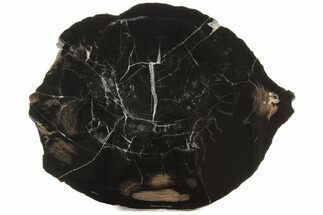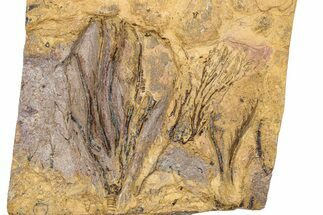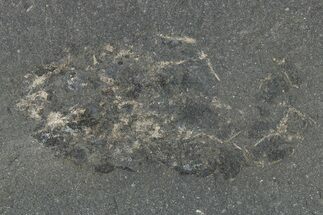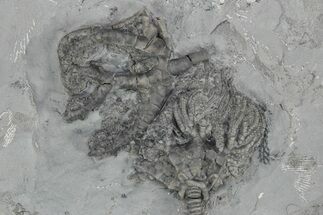This Specimen has been sold.
Three Species of Crinoids on One Plate - Gilmore City, Iowa
These are three naturally associated fossil crinoids of the species Aorocrinus iola (#1), Eretmocrinus tentor (#8) and Strimplecrinus campto (#21), collected from the Gilmore City Formation of Gilmore City, Iowa. The rock has been meticulously removed using air abrasives to reveal the beautiful structure of these crinoids.
#1 - Aorocrinus iola (.8" long including stem)
#8 - Eretmocrinus tentor (1.4" long including stem)
#21 - Strimplecrinus campto (.5" long)
The small Strimplecrinus crinoid is laying on top of the Aorocrinus and there is a repaired crack just beneath the Aorocrinus crinoid where the rock chipped away and was glued back in place.
It comes with an acrylic display stand.
#1 - Aorocrinus iola (.8" long including stem)
#8 - Eretmocrinus tentor (1.4" long including stem)
#21 - Strimplecrinus campto (.5" long)
The small Strimplecrinus crinoid is laying on top of the Aorocrinus and there is a repaired crack just beneath the Aorocrinus crinoid where the rock chipped away and was glued back in place.
It comes with an acrylic display stand.
Crinoids, sometimes commonly referred to as sea lilies, are animals, not plants. They are echinoderms related to starfish, sea urchins, and brittle stars. Many crinoid traits are like other members of their phylum; such traits include tube feet, radial symmetry, a water vascular system, and appendages in multiples of five (pentameral). They first appeared in the Ordovician (488 million years ago) and some species are still alive today.
SPECIES
Aorocrinus iola, Eretmocrinus tentor & Strimplecrinus campto
LOCATION
Gilmore City, Iowa
FORMATION
Gilmore City Formation
SIZE
3.3 x 2.4" rock
CATEGORY
SUB CATEGORY
ITEM
#148693
We guarantee the authenticity of all of our
specimens. Read more about our
Authenticity Guarantee.
specimens. Read more about our
Authenticity Guarantee.
 Reviews
Reviews












